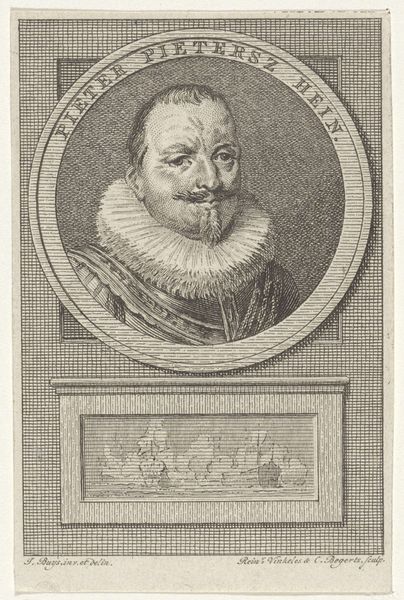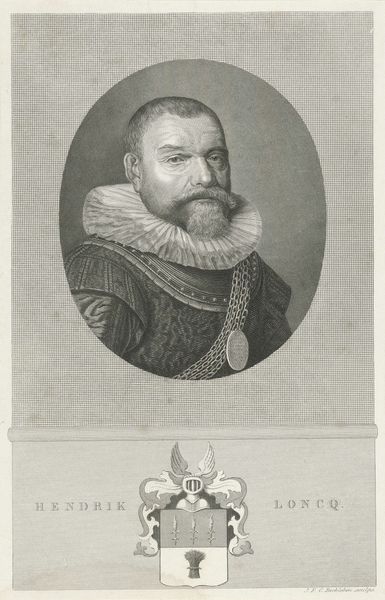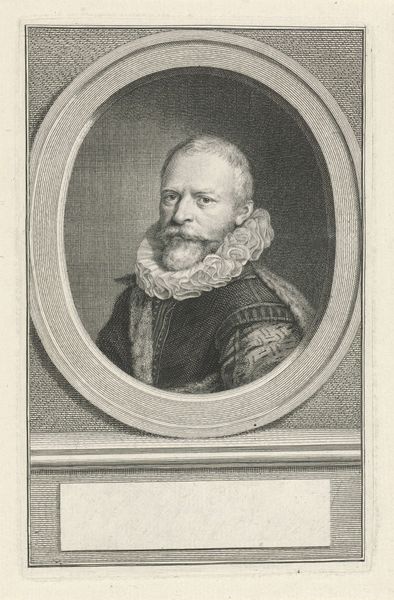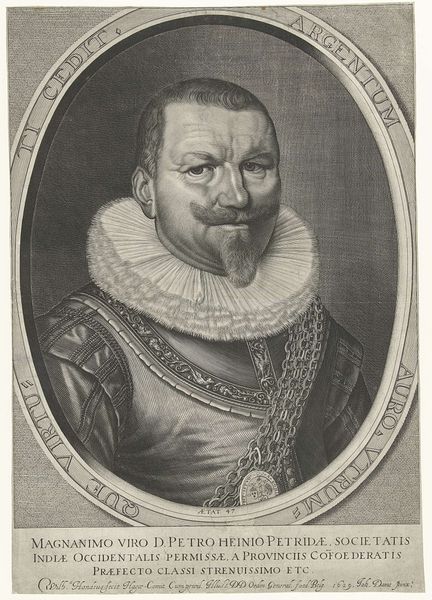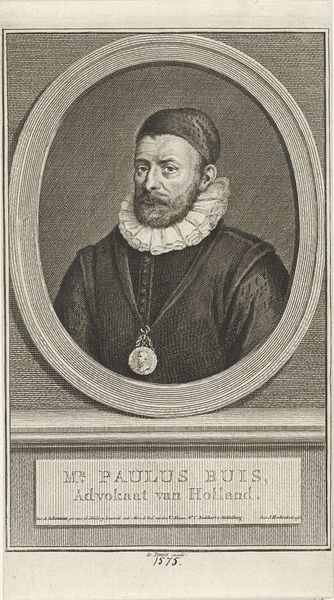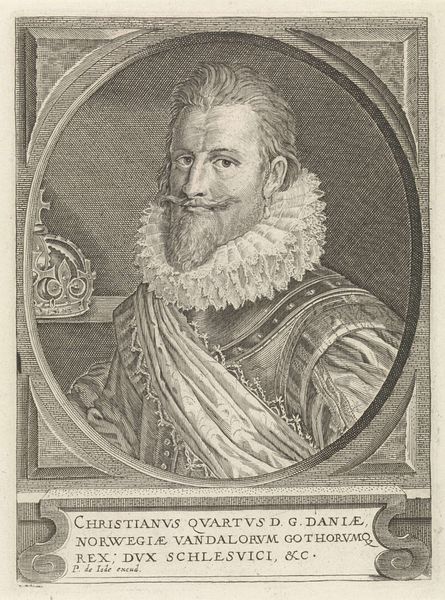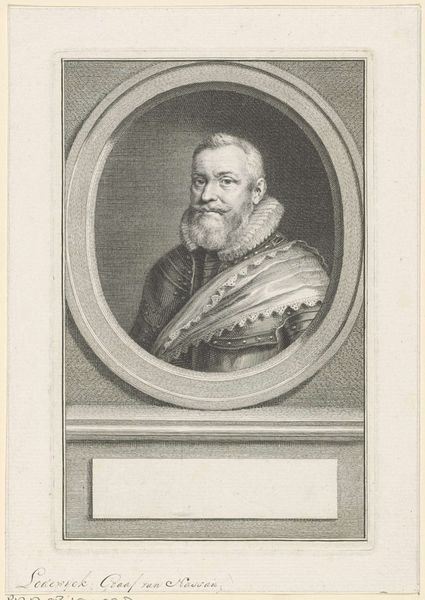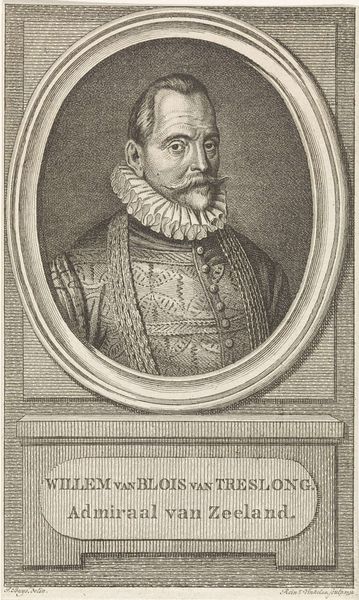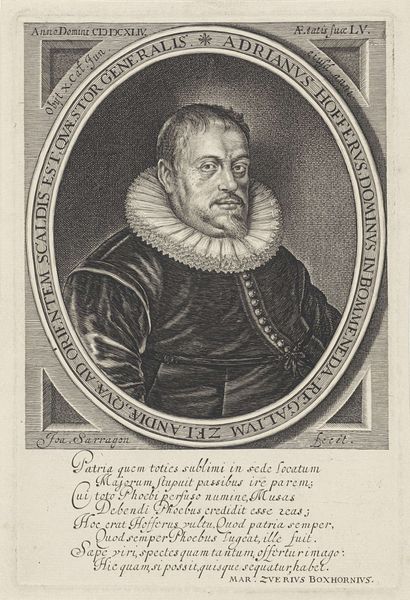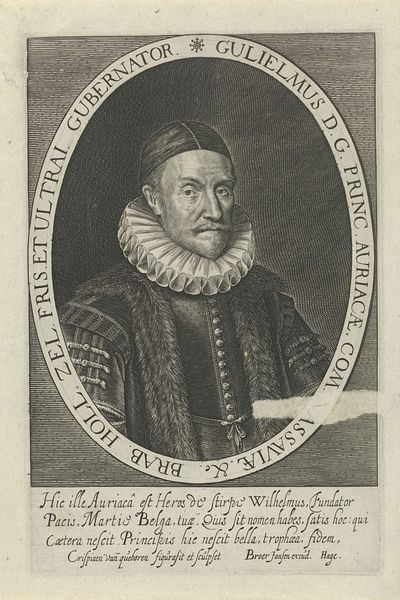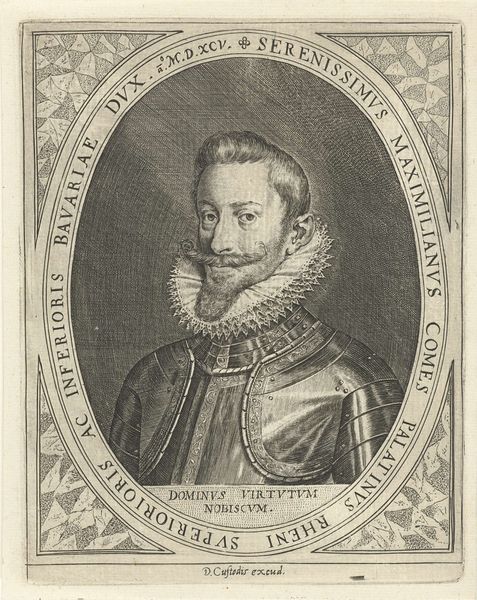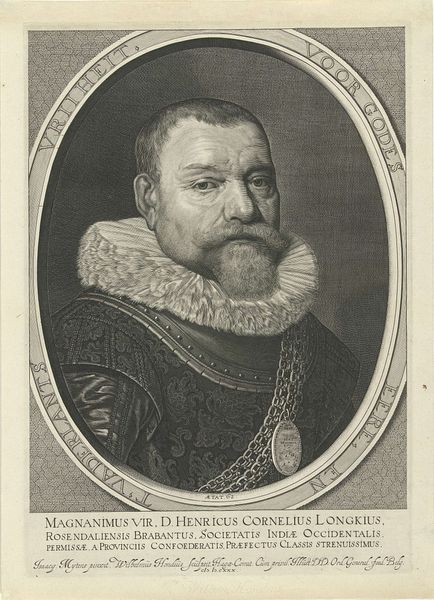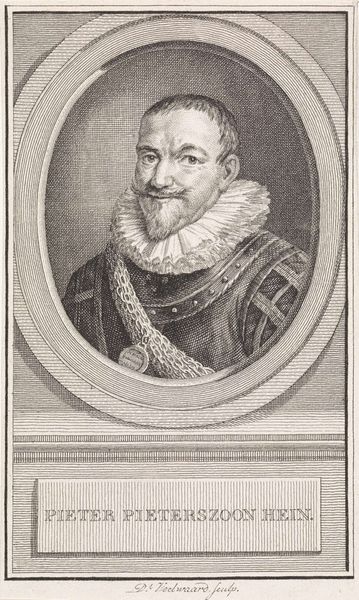
engraving
#
portrait
#
baroque
#
line
#
history-painting
#
engraving
Dimensions: height 183 mm, width 115 mm
Copyright: Rijks Museum: Open Domain
Curator: Let's turn our attention to this intriguing engraving from the Rijksmuseum's collection, “Portret van Pieter Pietersz. Heyn,” crafted between 1749 and 1759 by Jacob Houbraken. Editor: What immediately strikes me is the intensity of the gaze and the contrast of textures. The meticulous detail in that ruff around his neck is astonishing, particularly considering the medium is just engraving. It's both grand and somehow quite intimate. Curator: Absolutely. Consider the history imbued in this print. It serves as a kind of proto-photograph, solidifying the legacy and social standing of Pieter Pietersz. Heyn. Think about the function it performed. It was mass-produced, yes, but also carefully constructed to present him as a heroic figure within Dutch society. The medal is a physical manifestation of his bravery. Editor: That's an interesting point about mass production, though, isn't it? Engravings made art accessible, but they also relied on highly skilled labor. The intricacy of the lines suggests hours of focused work by Houbraken, transforming a copper plate into this reproducible image. The economy of art production also shifted significantly, wouldn’t you agree? Curator: Certainly, engravings democratized access to portraiture and contributed to the construction of historical narratives for public consumption. Pieter Hein was a key figure in the Eighty Years' War; it’s not just a portrait, it’s an act of remembering his part within Dutch collective memory. It visualizes and reinforces societal power structures and heroic narratives. Editor: And yet, by using engraving, an intrinsically reproducible medium, a statement is also being made regarding dissemination. How art could spread the word of Heyn’s achievements. We’re left considering who benefitted materially from this engraving too - Houbraken or his patron? How were the printed pages traded, bought, or given away? The labour input seems a critical piece of its value. Curator: It is the intersection of access, skill and labour that creates the overall historical artefact. Thank you. Editor: Exactly! It shifts from simple portraiture to material social history.
Comments
No comments
Be the first to comment and join the conversation on the ultimate creative platform.
